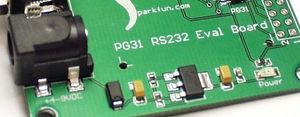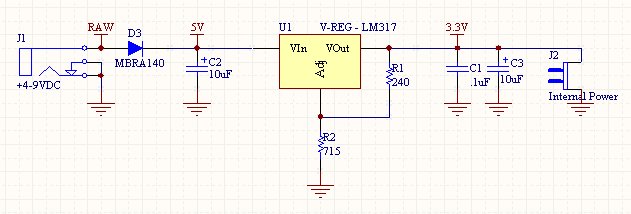Difference between revisions of "Reverse Protection Diodes"
(I hope I haven't gotten this backwards ...) |
|||
| Line 20: | Line 20: | ||
These type diodes can also be used, four at a time, in an [http://en.wikipedia.org/wiki/Diode_bridge bridge rectifier] configuration. I don't have a good image (now you do), but an bridge rectifier takes an AC signal and rectifies it to a DC signal (neat trick actually). A bridge rectifier circuit will also work with a DC supply. This allows the "reverse protection" trick to become an "I don't care" trick -- whichever way the polarity of the input voltage is, the circuit will still work. The downside is that you lose 2 diode drops or about 1.3V. NOTE -- you have to disconnect the input power from ground to make this work. | These type diodes can also be used, four at a time, in an [http://en.wikipedia.org/wiki/Diode_bridge bridge rectifier] configuration. I don't have a good image (now you do), but an bridge rectifier takes an AC signal and rectifies it to a DC signal (neat trick actually). A bridge rectifier circuit will also work with a DC supply. This allows the "reverse protection" trick to become an "I don't care" trick -- whichever way the polarity of the input voltage is, the circuit will still work. The downside is that you lose 2 diode drops or about 1.3V. NOTE -- you have to disconnect the input power from ground to make this work. | ||
| − | Diodes come in all shapes and sizes. For this posting, we only care about cheap, bulky, large current diodes. These diodes can handle 1-2A each and are cheap. For some our mass designs, we prefer the surface mount diodes (MBRA140). The MBRA140 comes in an SMA package (hopelessly confused with the SMA antenna connector - who came up with this?!). Many other diodes come in axial packages perfect for bread boarding. They all work the same - there is an anode and a cathode. I was always told to remember the <b>a</b>node | + | Diodes come in all shapes and sizes. For this posting, we only care about cheap, bulky, large current diodes. These diodes can handle 1-2A each and are cheap. For some our mass designs, we prefer the surface mount diodes (MBRA140). The MBRA140 comes in an SMA package (hopelessly confused with the SMA antenna connector - who came up with this?!). Many other diodes come in axial packages perfect for bread boarding. They all work the same - there is an anode and a cathode. I was always told to remember the <b>a</b>node is the <b>a</b>rrow, the bar is the cathode, and current flows in the direction of the arrow. Cool huh? |
We like the MBRA140 cause it's cheap and can handle up to 1A. One amp is overkill for most applications, but that's why it's good, it'll work with most applications. If you need something less burly, Digikey/Mouser has more than plenty. Be sure to get a diode that is current rated for the max current draw of your system. If the diode is too small, it'll heat up and eventually burn out. | We like the MBRA140 cause it's cheap and can handle up to 1A. One amp is overkill for most applications, but that's why it's good, it'll work with most applications. If you need something less burly, Digikey/Mouser has more than plenty. Be sure to get a diode that is current rated for the max current draw of your system. If the diode is too small, it'll heat up and eventually burn out. | ||
Revision as of 15:00, 24 April 2010
Description:
These large current, high voltage diodes can be used for a multitude of purposes. Really, we just use them for reverse polarization protection.
Most systems that we play with are DC based - whatever board requires 'X' voltage (3.3V for example). The board expects the DC voltage in a certain way. VCC in one spot, ground in another. If you reverse this (attaching VCC where GND should be, etc) BAD things happen. If you're lucky, there will be a massive short somewhere and nothing major will smoke. If you're unlucky, the board will go up in smoke and some things might explode. In practice, most things heat up (no smoke or explosion), but are instantly killed. So now you've got a board that doesn't work but it can be very hard (nye, nearly impossible) to tell what is damaged and what can be fixed.
Obviously there must be a way to prevent this from happening. Enter diodes...
These pieces of silicon allow current to flow in one direction only. Quite simply, VCC is allow through but GND is not. Why don't we put a diode on every VCC? Well a diode can cause a 0.7V drop (that's what they teach you in silly eng school at least) on the power line. So if you are dealing with a really low-power system, 0.7V drop can be too much.
There are other ways to protect against reverse polarization like polarized connectors and certain voltage regulators have protection built in. But it you're designing something for mass-market where you don't know who will be connecting what, a reverse protection diode is cheap and easily designed into a board.
Here you can see the diode D3 in place, directly connected to the Barrel Power Jack.
These type diodes can also be used, four at a time, in an bridge rectifier configuration. I don't have a good image (now you do), but an bridge rectifier takes an AC signal and rectifies it to a DC signal (neat trick actually). A bridge rectifier circuit will also work with a DC supply. This allows the "reverse protection" trick to become an "I don't care" trick -- whichever way the polarity of the input voltage is, the circuit will still work. The downside is that you lose 2 diode drops or about 1.3V. NOTE -- you have to disconnect the input power from ground to make this work.
Diodes come in all shapes and sizes. For this posting, we only care about cheap, bulky, large current diodes. These diodes can handle 1-2A each and are cheap. For some our mass designs, we prefer the surface mount diodes (MBRA140). The MBRA140 comes in an SMA package (hopelessly confused with the SMA antenna connector - who came up with this?!). Many other diodes come in axial packages perfect for bread boarding. They all work the same - there is an anode and a cathode. I was always told to remember the anode is the arrow, the bar is the cathode, and current flows in the direction of the arrow. Cool huh?
We like the MBRA140 cause it's cheap and can handle up to 1A. One amp is overkill for most applications, but that's why it's good, it'll work with most applications. If you need something less burly, Digikey/Mouser has more than plenty. Be sure to get a diode that is current rated for the max current draw of your system. If the diode is too small, it'll heat up and eventually burn out.
Documents:
MBRA140 Datasheet
Footprints:
SFE Footprint Library
FP Name: SMA-Diode
Manufacturer Info:
International Rectifier # : MBRA140TR
Supplier Info:
Digikey part # : MBRA140CT-ND
Single Piece Price : $0.45
Related Items:

